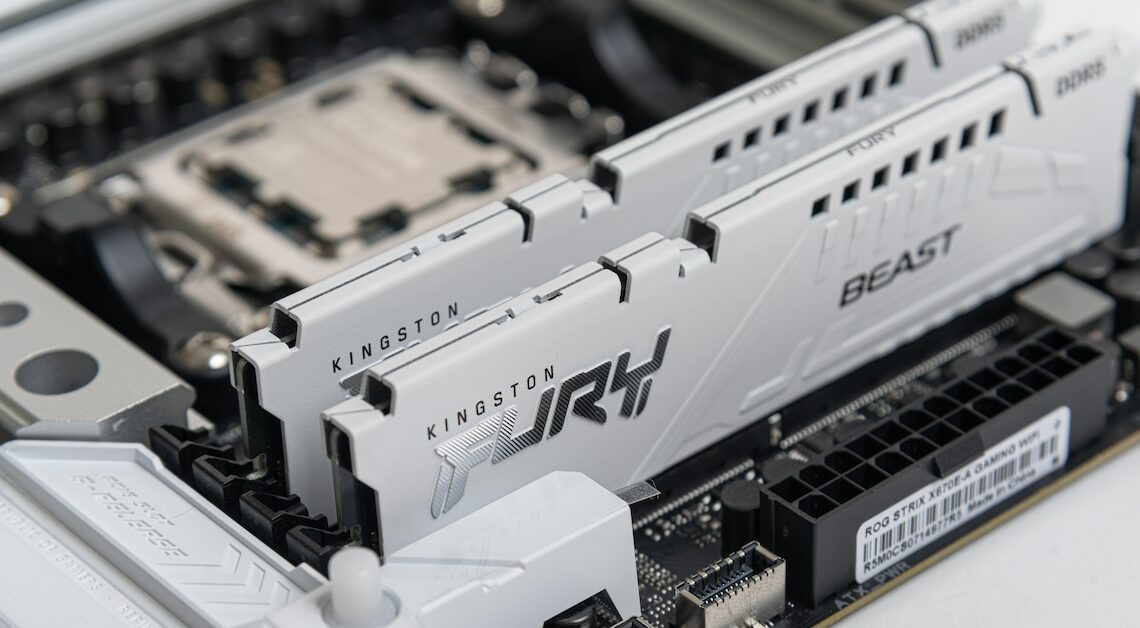
Installing RAM is not difficult. You can insert compatible modules into your desktop PC or laptop without any prior knowledge.
Install RAM: Use suitable modules
When purchasing RAM, you must make sure that it is compatible with your computer compatible is.
- The most important thing here is the storage type. The installed mainboard only offers space for one specific format from the following: DDR1, DDR2, DDR3, DDR4 and DDR5. Only use RAM modules from the same manufacturer, as different ones often do not mix with each other.
- About the System information of your computer, find out which RAM format you need. Alternatively, check the operating instructions for your mainboard.
- You also have to make sure that desktop PCs are primary DIMM-Module to use. For laptops you need the smaller version with the designation SO-DIMM. There are rarely desktop computers with SO-DIMM compatibility.
- Tipp: You need suitable tools for installation. What is particularly important are small screwdrivers that fit the screws on your computer cover.
Installing new RAM: Instructions for desktop PCs
If there are still free slots on the mainboard of your PC, you can use the new RAM parallel install. If all places are occupied, you must use the old modules exchange.
- Turn off your computer completely and disconnect the power cable at the back. Then remove the screws on the back of the cover to open the PC.
- Now you have to be extra careful. If possible, do not touch the motherboard at all. Use for installation just your hands and no other tools.
- You will usually find one of each of the already installed RAM modules on the left and right white switch. If you simply turn it over to the outside, the RAM can be removed directly.
- Insert the new RAM and press it with a little pressure downward. The RAM bar clicks into place with a click. Then reattach the white switches.
- If you have more than two slots, pay attention to them correct arrangement the RAM bar. For four slots, the order is typically as follows: DIMM-A1, DIMM-B1, DIMM-A2, DIMM-B2.
- For example, if you use two RAM modules, only occupy the slots DIMM-A1 and DIMM-B1. These work together just like DIMM-A2 and DIMM-B2 and so on.
- Now you can screw your computer back together and put into operation.
Installing SO-DIMM RAM: Instructions
Use one Laptop or another device with SO-DIMM memory, proceed as follows:
- Turn off the device and unplug the charging cable. Now open the laptop on the back about the screws.
- You should then see the RAM modules directly. Laptops usually offer one or two SO-DIMM slotsthat you can prove. The first of the two slots is a little deeper on most motherboards.
- Alternatively, check the slot name. There is that A and B slot for SO-DIMM RAM memory. At least the A slot must be occupied.
- At the slots you will see two small metal pins that you push outwards. This will release the RAM latch and you can use it remove.
- Carefully insert the new RAM bars into the slot. Don't be surprised if it sticks out a bit. You have to do this now down towards the mainboard Press so that they snap into the holder
- This can be seen in one Clicking sound. You can then screw the cover back on and turn your laptop back on.
After installing: Check RAM
After you have installed everything properly, check the RAM.
- Start your computer and go to the Settings via the Windows start menu. Click on the tab System.
- In this menu you navigate to the option Info. Select these.
- You can now see the RAM recognized by Windows in the middle Installed RAM. The total RAM capacity is displayed. Alternatively, use analysis tools such as CPU-Z.
- Notice: If a module was not recognized correctly, you should check the compatibility with the mainboard or install the RAM bars again.
